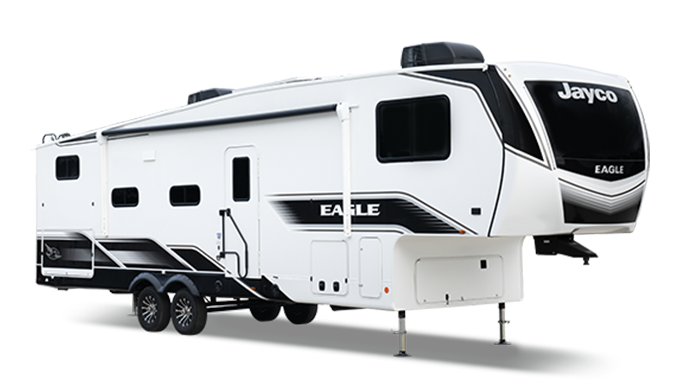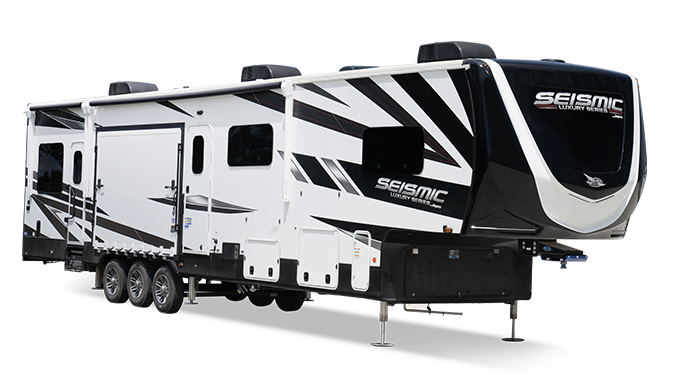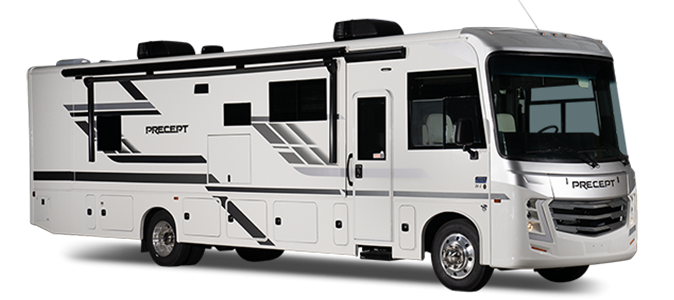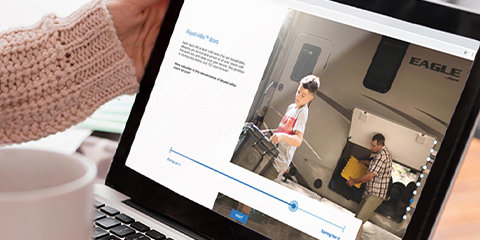In today's digital age, having reliable cell service and Wi-Fi has become a necessity, especially for RVers on the move. Staying connected while on the road can be a challenge, as many remote and rural areas lack reliable cell coverage and internet access. Fortunately, with the advancement of technology, there are several ways that RVers can get cell service and internet while traveling. Let's explore the various ways RVers can stay connected on the road, ranging from prepaid phone services to Starlink satellites and everything in between.
1. CELL PHONE CARRIERS
When choosing a cell phone carrier, it's important to consider the coverage area. Some carriers have better coverage in certain regions than others. In our experience, we’ve found that Verizon and AT&T tend to have better coverage in rural areas, while T-Mobile has better coverage in urban areas. We use both Visible Wireless (which uses Verizon towers) and MetroPCS (which uses T-Mobile towers) so we have a better chance of getting good service in any area that we visit.
In addition to coverage, RVers should also consider the specific carrier's data plans. Some plans may have data caps or throttling after a certain amount of usage. Prepaid cell phone plans can be a great option, and the price is often much lower than traditional postpaid plans because you get lower data caps. And with a prepaid plan, you don’t have to worry about contract commitments or overage fees.
2. MOBILE HOTSPOTS
The easiest and most convenient choice for getting internet on the road is a mobile hotspot. So, what is a hotspot? It’s a small device that receives a cellular signal (just like your cell phone), and converts it into a Wi-Fi signal that other devices can connect to. Many cell phone carriers offer mobile hotspot plans, which allow you to use your phone as a hotspot. You can also purchase a specific hotspot device—commonly called a MiFi device—which will have its own data plan. Some hotspot data plans can be as low as $10 per month for limited or capped data, while others can be over $100 per month for unlimited data. Keep in mind that this doesn’t include the one-time price for the actual device itself, which typically costs about $150.
Verizon has a range of MiFi devices with great performance and affordable prices. Mobile hotspots can provide a reliable connection in places and situations where it might be hard to get internet access. They are easily portable, can connect several different devices at once and can be used while in transit. The only downside is they don’t work without cell service; they need even just a small amount of cellular service in order to create a Wi-Fi signal.
3. SIGNAL BOOSTERS
If you’re someone who likes to RV in really remote areas or places with little to no service, then a signal booster might be the best option for you. Signal boosters (also sometimes called Wi-Fi boosters) work well with mobile hotspots, and amplify limited or weak cell signals to create a better connection and faster internet speeds. There are many signal boosters on the market, ranging from portable devices that can be placed anywhere inside your RV to more permanent installation kits.
A popular signal booster for RVers is the weBoost Drive Reach RV kit. This kit can boost any carrier’s coverage, and most RVers install the antenna directly on their roof for the best results. Prices for the kit start at $520, but keep in mind that this is a one-time purchase and there are no additional monthly fees to operate.

4. WIRELESS HOME INTERNET
Wireless home internet is another option for staying connected on the go. Much like a mobile hotspot, this internet set-up uses cell towers to create a network that other devices can connect to. Wireless home internet also requires a data plan but they tend to be less expensive than a hotspot with unlimited data. The hardware for a home internet connection costs about $100, and data plans range from $25-60 per month. The one drawback is that these set-ups aren’t nearly as portable as a mobile hotspot—you have to keep the hardware plugged into your RV and, therefore, can’t always use it when you’re driving or towing. However, they’re still a great option for RVers who want good service on a budget.
5. SATELLITE INTERNET
Another option that is becoming increasingly more popular among RVers is satellite internet. This is especially great for those that like to camp in remote locations where traditional internet connections are not available. Starlink, a satellite internet service provided by SpaceX, provides high-speed, low-latency internet in places where there is no service or coverage. Users are able to stream videos, play online games and download large files without significant delay or interruption.
Starlink recently announced a satellite service called Roam that is specifically tailored for RVers, and even allows RVers to access the internet while driving. The hardware and satellite for Starlink Roam costs $600, and then $150 per month to access. There are also no startup fees and you can pause your monthly service at any time without penalty. While satellite internet may be more expensive compared to other options, it can be a lifesaver for anyone who prefers to camp off-the-grid but still wants to stay connected.
6. PUBLIC WI-FI
Sometimes getting internet while traveling can be as simple as connecting to your campground's Wi-Fi network. More and more campgrounds and RV parks are offering free Wi-Fi to their guests, but the quality of the connection can vary greatly from place to place. If you plan to rely on campground Wi-Fi, call ahead and ask them about their broadband speeds, which are measured in megabits per second (Mbps). And be sure to ask how the speed varies across the different campsites. We’ve found that free campground Wi-Fi can get slow and overloaded if a lot of guests are using it, especially during the evenings. This can be difficult if you’re trying to stream a show or download files. However, if you only need the internet to surf the web or check emails, then basic Wi-Fi may suit your needs.
If the Wi-Fi at your campground isn’t great (or they don’t even offer it), you can always head to a local library or coffee shop to connect. Since many people use these types of places to work, the internet connections can be much stronger. Again, the quality of public Wi-Fi can vary and you’ll want to be careful when using a public network. Whenever possible, always connect to secured public networks and try not to open any websites or files that contain sensitive, personal data (bank accounts, social security numbers, etc.).
Another option for public Wi-Fi is to visit a coworking space. A coworking space is a communal building or office that allows individual workers from different companies to share tools, services and facilities for a daily or monthly fee. These spaces are becoming increasingly popular across the country, and are a great way to access fast, reliable internet. Some coworking spaces offer a free one-day pass but most charge a daily or monthly fee. Daily fees can range anywhere from $25 for a shared communal desk to $75 for a private office. If you know you’re going to be in one location for a while and need reliable internet, it might be worth getting a monthly pass, which is typically more cost-efficient compared to a daily pass. The only drawback to coworking spaces is their availability—you may have a hard time finding one in remote or rural areas.
As you can see, there are a ton of ways to stay connected while traveling. It really just depends on what your needs are, what your budget is and how hassle-free you want your setup to be.











































.png)
